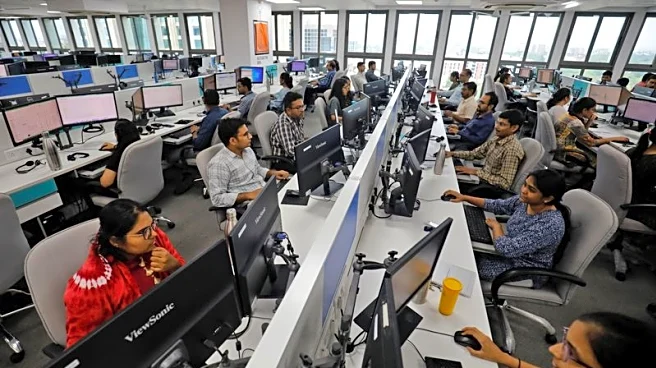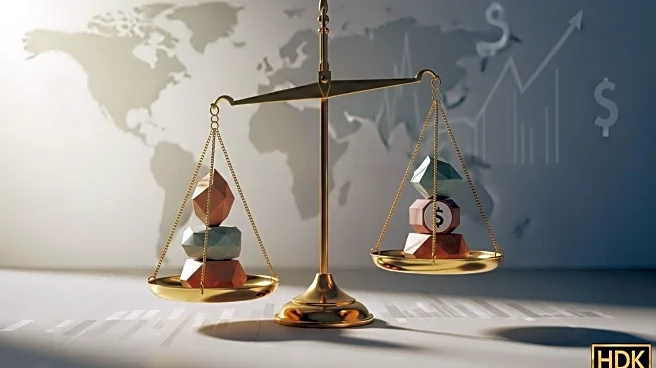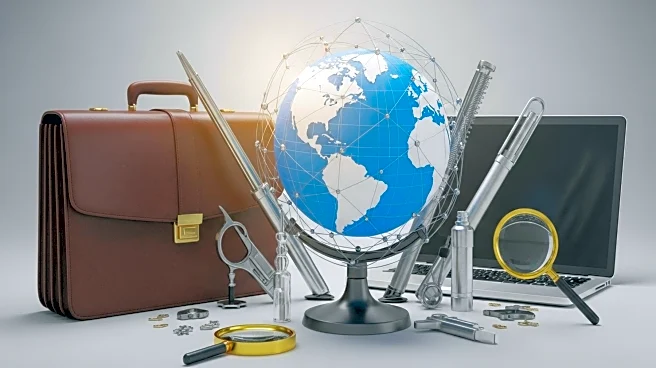What is the story about?
What's Happening?
India's economic activity has shown signs of cooling in September following the implementation of 50% tariffs by President Trump. According to a flash survey conducted by HSBC Holdings Plc, the manufacturing purchasing managers' index decreased from 59.3 in August to 58.5 in September. Similarly, the services purchasing managers' index fell from 62.9 to 61.6 over the same period. This decline resulted in the composite index dropping to 61.9 from 63.2 in August. Despite these indicators, the Indian government maintains its growth forecast of 6.3% to 6.8% for the current year.
Why It's Important?
The imposition of tariffs by President Trump has significant implications for international trade and economic relations. For India, the cooling of economic activity could signal potential challenges in maintaining its growth trajectory. The tariffs may lead to increased costs for Indian exporters and disrupt supply chains, affecting both manufacturing and services sectors. This development highlights the interconnectedness of global economies and the potential ripple effects of U.S. trade policies on other nations. Stakeholders in India, including businesses and policymakers, may need to reassess strategies to mitigate the impact of these tariffs.
What's Next?
India may explore diplomatic channels to address the tariff issue with the U.S., seeking to negotiate terms that could alleviate the economic pressure. Additionally, Indian businesses might look for alternative markets or adjust their operations to cope with the increased costs. The situation could also prompt discussions within international trade forums about the broader implications of such tariffs and potential resolutions. Monitoring future economic indicators will be crucial to understanding the long-term effects on India's economy.
AI Generated Content
Do you find this article useful?














